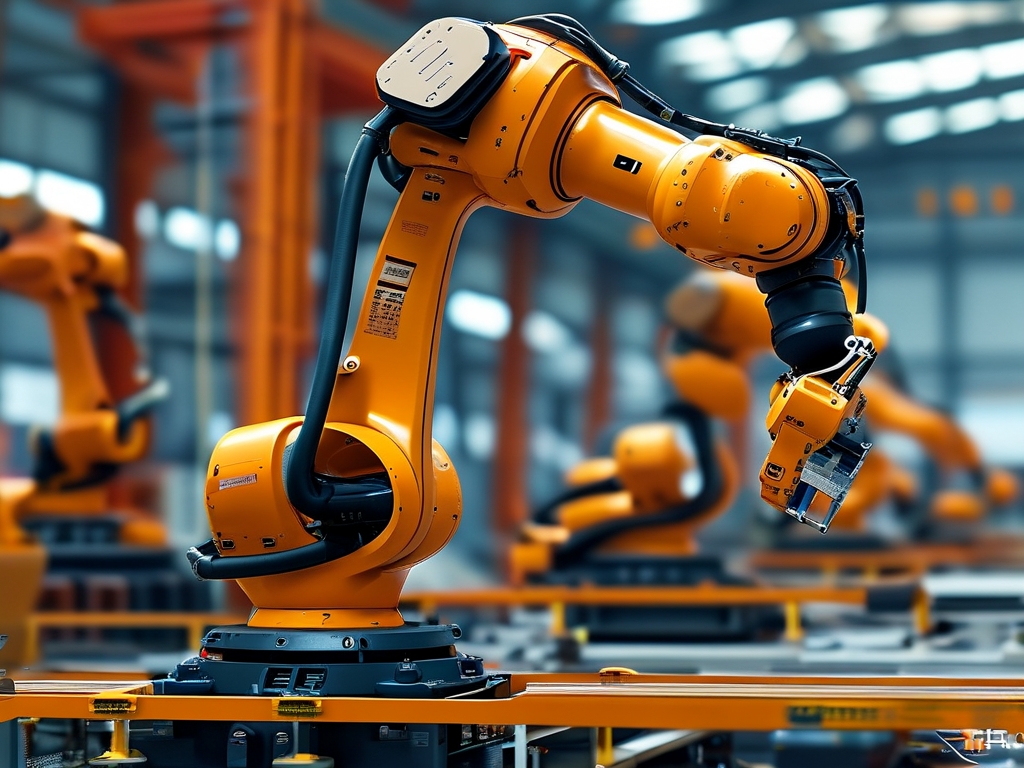BYD's Robotic Technology: Innovations in Motion and Precision

In recent years, BYD (Build Your Dreams), a Chinese multinational company renowned for its advancements in electric vehicles and renewable energy, has emerged as a significant player in the field of robotics. Combining its expertise in automation, artificial intelligence (AI), and manufacturing, BYD has developed cutting-edge robotic technologies that redefine efficiency, precision, and adaptability. This article delves into the core principles behind BYD's robotic systems, exploring their design philosophy, key technological components, and real-world applications.
1. Foundations of BYD's Robotic Systems
BYD's robotics technology is built on three foundational pillars: modular design, sensor fusion, and adaptive control algorithms. These elements work synergistically to create robots capable of performing complex tasks in dynamic environments.
- Modular Design: BYD's robots are constructed using standardized, interchangeable modules. This approach allows for rapid customization and scalability. For instance, a robotic arm designed for automotive assembly can be reconfigured with different end-effectors (e.g., grippers, welders) to adapt to new production lines without requiring a complete redesign.
- Sensor Fusion: BYD integrates multiple sensors-including LiDAR, vision cameras, torque sensors, and inertial measurement units (IMUs)-to enable real-time environmental perception. By fusing data from these sensors, robots gain 360-degree situational awareness, crucial for tasks like obstacle avoidance in warehouses or precision welding in manufacturing.
- Adaptive Control Algorithms: At the heart of BYD's robotics is a suite of AI-driven algorithms. These algorithms process sensor data to adjust movements dynamically. For example, if a robotic arm detects a misaligned component during assembly, the system recalculates its trajectory mid-task to ensure accuracy.
2. Core Technologies Powering BYD's Robots
BYD's robotic systems rely on several breakthrough technologies:
- High-Precision Actuators: BYD develops proprietary electric actuators that deliver exceptional torque and positional accuracy. These actuators use brushless DC motors paired with harmonic drives, reducing mechanical backlash to under 0.1 degrees-a critical feature for tasks like semiconductor handling or battery cell placement.
- Edge AI Computing: Instead of relying solely on cloud-based processing, BYD embeds AI chips directly into robots. This "edge computing" approach minimizes latency, enabling real-time decision-making. For instance, a logistics robot can autonomously reroute itself around obstacles without waiting for centralized server commands.
- Human-Robot Collaboration (HRC): BYD's collaborative robots (cobots) incorporate force-limiting mechanisms and tactile skins to ensure safe interaction with humans. Using torque sensors and predictive AI models, these cobots can detect unintended contact and halt operations within milliseconds, meeting ISO/TS 15066 safety standards.
3. Applications Across Industries
BYD's robotics technology has found applications in diverse sectors:
- Automotive Manufacturing: In BYD's own EV factories, robotic arms perform tasks ranging from battery module assembly to paint spraying. Vision-guided robots inspect vehicle bodies for defects with micron-level precision, reducing error rates by 40% compared to manual checks.
- Logistics and Warehousing: Autonomous Mobile Robots (AMRs) developed by BYD navigate warehouses using SLAM (Simultaneous Localization and Mapping) technology. These AMRs optimize inventory management by transporting goods 24/7, cutting operational costs by up to 30%.
- Healthcare: During the COVID-19 pandemic, BYD deployed disinfection robots equipped with UV-C lights and HEPA filters. These robots autonomously sanitized hospitals, reducing infection risks for medical staff.
4. Sustainability and Energy Efficiency
A hallmark of BYD's robotics is their energy-efficient design. Unlike traditional hydraulic robots, BYD's all-electric systems consume 60% less power. Regenerative braking technology in mobile robots recovers kinetic energy during deceleration, further enhancing sustainability. This aligns with BYD's broader mission to advance green technologies.
5. Future Prospects and Challenges
Looking ahead, BYD aims to integrate quantum computing for ultra-fast motion planning and develop swarm robotics for large-scale coordinated tasks (e.g., disaster response). However, challenges remain, including the need for more robust AI models to handle unpredictable environments and the high initial costs of advanced sensor systems.
BYD's robotic technology exemplifies the convergence of innovation, sustainability, and practicality. By leveraging modular architectures, sensor fusion, and AI-driven adaptability, BYD is not only transforming industries but also setting new benchmarks for intelligent automation. As the company continues to refine its systems, its robots are poised to play a pivotal role in shaping the future of smart manufacturing, healthcare, and beyond.









